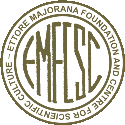Description
Abstract:
Quantum information technology puts stringent demands on the quality of materials and interfaces in the pursuit of increased device coherence. Yet, little is known about the chemical structure and origins of paramagnetic impurities that produce flux/charge noise causing decoherence of fragile quantum states and impeding the progress towards large- scale quantum computing. Our on-chip electron-spin resonance techniques [1] gave vital clues to the long-standing problem of noise and decoherence in superconducting devices: a technique for on-chip Electron Spin Resonance allowed to identify, for the first time, the chemical species responsible for the flux noise in superconducting circuits [2,3]. Furthermore, the most recent noise measurements in superconducting resonators point to the link between charge and flux noise in superconducting circuits: a mild sample treatment has led to tenfold reduction of the surface spins, responsible for the flux noise, as evidenced by ESR, and this treatment has also led to tenfold reduction of the low frequency noise in superconducting resonator, associated with the charge noise [4]. We have developed tunable resonators [5] to evaluate the density of states of decohering defects. Our results demonstrate a previously unexplored decoherence mechanism in the form of a new type of TLS originating from trapped QPs, which can induce qubit relaxation [6]. By extending our tunable resonator techniques, we have got an access to microscopic Hamiltonians of interacting TLF [7] – the incoherent low-energy fluctuators which have been previously only postulated in theory. Furthermore, to get more insight on g=2 spins, reported in [3], we have applied a high magnetic-field electron paramagnetic resonance (HFEPR) and hyperfine multi-spin spectroscopy on α-Al2O3, a common substrate for quantum devices (an amorphous Al2O3 is also unavoidably present in aluminum-based superconducting circuits and qubits). The identified paramagnetic centers are immanent to the surface and have a well-defined but highly complex structure that extends over multiple hydrogen, aluminum and oxygen atoms. Modelling reveals that the radicals likely originate from well-known reactive oxygen chemistry common to many metal oxides. The chemical identification of the possible sources of noise in superconducting devices allows for an active chemical intervention, aiming at silencing the defects and, therefore, improving the coherence in superconducting quantum devices [8].
[1] Journ. of Appl. Phys. 112, 123905, (2012)
[2] Phys. Rev. Lett. 118, 057703, (2017)
[3] Phys. Rev. Lett. 118, 057702, (2017)
[4] Nature Comms. 9, 1143, (2018)
[5] Phys. Rev. Appl. 14, 044040, (2020)
[6] Sci. Adv. 6, (2020) DOI: 10.1126/sciadv.abc5055
[7] Phys. Rev. B 103, 174103, (2021)
[8] Sci. Adv. 8, (2022) DOI: 10.1126/sciadv.abm6169

